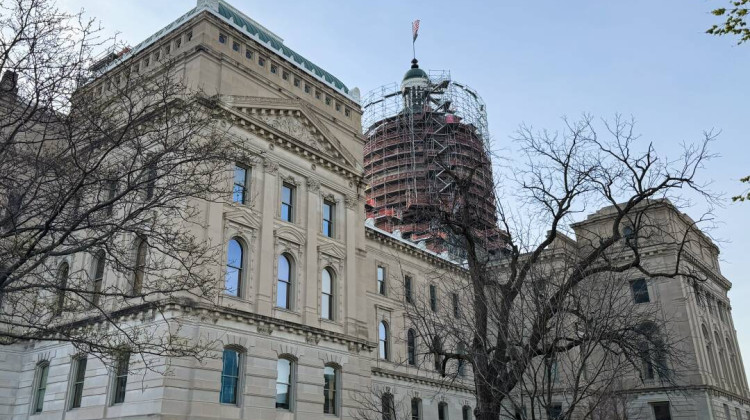State lawmakers heard from experts on Thursday on what Indiana utilities and regional grid operators are doing to prevent blackouts like the ones in Texas. In many ways comparing the two states’ energy systems is like apples and oranges.
Ryan Hadley is with the Indiana Utility Regulatory Commission. He said Indiana utilities are used to the cold. That’s why they do things like insulate pipes and other weatherization — which isn’t required for Texas utilities.
“Texas faced Indiana-like weather and wasn’t prepared for Indiana-like weather — and we are," Hadley said.
Whereas most of Texas has its own separate power grid, Indiana is part of two major regional transmission organizations — so it’s easier to borrow electricity from other states when blackouts happen.
A map of regional transmission organizations. (Courtesy of the Federal Energy Regulatory Commission)
But as Indiana faces more extreme weather, some lawmakers worry whether the state’s energy system can handle it.
Melissa Seymour is with one of the grid operators that serves Indiana, the Midcontinent Independent System Operator or MISO. She said grid operators go through emergency planning scenarios, but the extreme weather in Texas was unprecedented.
Seymour said Indiana utilities will have to balance the harm these extreme weather events cause with the cost of upgrades to make them more resilient.
“You’re seeing more of these events occur, but how strong are — how much are customers willing to pay to ensure they don’t have a two-hour outage?” she said.
Some lawmakers were concerned about how the amount of renewable energy in Indiana and its regional grids could affect reliability.
In an interview with Fox News, Texas Gov. Greg Abbott blamed the state's wind and solar sources for the blackouts, but Texas grid operators said that every type of energy had issues due to the extreme weather and that no one energy source is behind the blackouts.
Seymour said distributed generation — like solar panels on the roofs of homes — could actually serve as a backup when big generators go out.
Contact reporter Rebecca at rthiele@iu.edu or follow her on Twitter at @beckythiele.
Indiana Environmental reporting is supported by the Environmental Resilience Institute, an Indiana University Grand Challenge project developing Indiana-specific projections and informed responses to problems of environmental change.
 DONATE
DONATE







 Support WFYI. We can't do it without you.
Support WFYI. We can't do it without you.